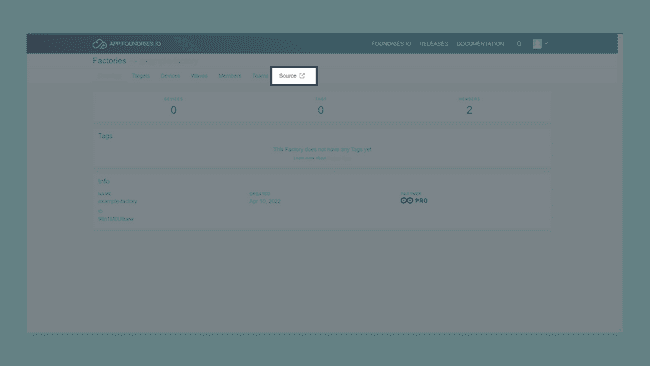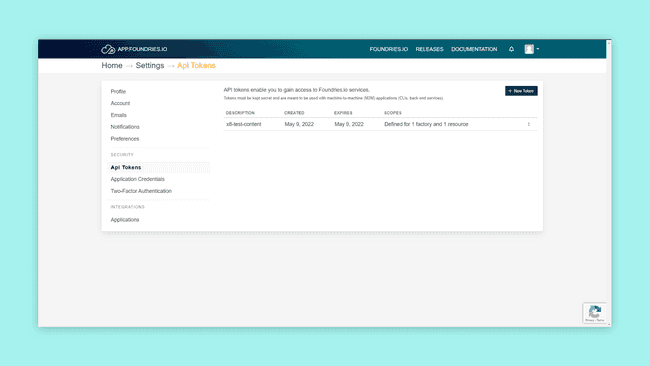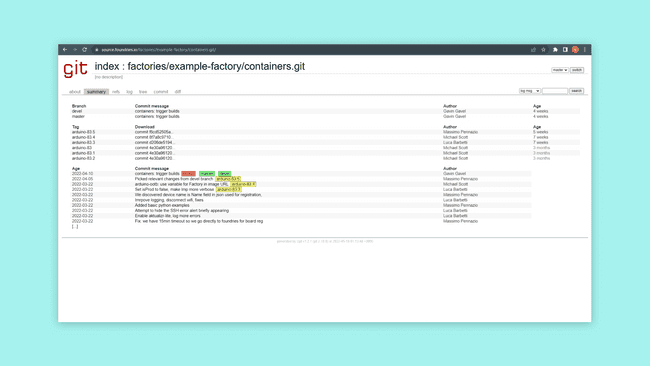Create and Upload a Custom Container to the Portenta X8
Overview
In this tutorial we will create a simple container that we can then upload to the Arduino Portenta X8. A container consists of an image file and all it's dependencies if there are any. This tutorial will go through the different files needed to create a container and their functions. Building this container locally and then uploading it to a Portenta X8. Using docker with ADB to build, run and attach our container to the Portenta X8.
Goals
- Learn how to create a container for use with the Portenta X8
- Learn how to upload a container to the Portenta X8
Required Hardware and Software
- Portenta X8
- ADB
- USB-C cable (either USB-C to USB-A or USB-C to USB-C)
- Arduino Pro Cloud Subscription. Learn more about the Pro Cloud.
Instructions
When running a container, it uses an isolated filesystem. This custom filesystem is provided by a container image. Since the image contains the container’s filesystem, it must contain everything needed to run an application - all dependencies, configuration, scripts, binaries, etc. The image also contains other configuration for the container, such as environment variables, a default command to run, and other metadata.
Container File Structure
To create our container we need to collect our necessary files. Creating a folder called x8-custom-test, the following files needs to be in the folder:
- docker-build.conf
- docker-compose.yml
- Dockerfile
- requirements.txt
- src folder
- main.py (This file should be inside the src folder)
The complete folder will look like this:

Lets go through what these files contain and do.
Docker-build.conf
A file containing the minimal "unit test" command to be executed on the container to prove it's working. Our file will make our containers minimal unit test a test of Python3 help command.
1TEST_CMD="python3 --help"Docker-compose.yml
This file defines the app name through the Factory, permissions and settings for the involved containers. The argument in the image tag will make it so our image file builds locally.
1version: '3.6'2
3services:4 x8-custom-test:5 image: blob-opera:latest6 restart: always7 tty: true8 read_only: true9 user: "63"10 tmpfs:11 - /run12 - /var/lock13 - /var/log14 - /tmpDockerfile
This is used to build the container.
1FROM python:3-alpine3.152
3# Set our working directory4WORKDIR /usr/src/app5
6# Copy requirements.txt first for better cache on later pushes7COPY requirements.txt requirements.txt8
9# pip install python deps from requirements.txt on the resin.io build server10RUN pip install -r requirements.txt11
12# This will copy all files in our root to the working directory in the container13COPY ./src/main.py ./14
15# Enable udevd so that plugged dynamic hardware devices show up in our container.16ENV UDEV=117
18# main.py will run when container starts up on the device19CMD ["python","-u","main.py"]Requirements.txt
1Flask==0.12.3Source
Here we will keep source code of the app you want to run in the container or a startup script. We will create a file and name it main.py in this folder. This script will print "Hello World!" in the CLI window.
1from flask import Flask2app = Flask(__name__)3
4@app.route('/')5def hello_world():6 return 'Hello World!'7
8if __name__ == '__main__':9 app.run(host='0.0.0.0', port=80)Uploading the Container Folder
First, you have to have set up your board to a Factory, as shown in the Portenta X8 Out of the Box tutorial.
Once this is done, we will push our folder to a repository within the Factory. Lets place our folder "x8-custom-test" inside the "containers.git" repository. You can find this repository inside your Factory page, if you click on "Source". And then on "container.git", the url of this page will be used in the next command.

In order to pull or push repositories you have to generate an API key. This can be done by going to the user settings on the Factory page. First click on the user drop-down menu, then go into the tokens page and follow the steps of creating a new API key. This token will be used as the password for all git operations while the username can be anything, except an empty string.


Use the following command in a Linux shell, like ADB which the previously mentioned tutorial showed how to set up. To get the repository on your board, replace "YOUR_FACTORY" with the name of your Factory. The "-b" parameter specifies a branch to checkout after cloning the repository. Running this command will get the container repository, where we will put our folder.
1git clone https://source.foundries.io/factories/YOUR_FACTORY/containers.git -b develPut the "x8-custom-test" folder in the repository. If you push the commit to "containers.git" a new target will automatically build on your FoundriesFactory, you can inspect it in the "Targets" page.
Building and Running the Container
After the build is finished, it can take up to 10 minutes for your device to OTA update to this new version. You can inspect it via the "Devices" tab of your FoundriesFactory. After your device takes the update, navigate into the "x8-custom-test" folder, that should be located on your board now. This allows us to build our container with a simple command. Using
docker build--tag1docker build --tag "x8-custom-test:latest" .Now that it is built we can run it with
docker run1docker run -it --rm --user "63" x8-custom-test:latestUsing Docker-Compose
A option for testing an app or container is to use "docker-compose". This is helpful when we have a lot of settings in our "docker-compose.yml" file, since we don't have to use those settings in the run argument with this method. First navigate into the container folder.
1cd /home/fio/x8-custom-testThis docker-compose command will start your application and register it as a systemd service that will persist even when a reboot occurs. So at the next boot your docker-compose app will run automatically.
1docker-compose up --detachTo stop the docker-compose app from running, use the following command:
1docker-compose stopConclusion
This tutorial went through what goes into a container, how the folder should be built and what files it should contain. It then explained what each files purpose is and what they should contain for this example. Then we went through how this relates back to the Factory, and how Foundries.io makes the whole process easier for us. We then showed how to build the container and run it on the Portenta X8. Lastly, we showed a useful testing feature with docker-compose. Which lets us test our container with a faster process.
Next Steps
To get a better understanding of how to manage containers with Docker, take a look at our Managing Containers with Docker on Portenta X8. This tutorial will show some useful commands to use with the docker service and ADB or SSH.
Troubleshooting
Here are some errors that might occur in the process of this tutorial:
- Make sure you have followed our other tutorials that shows how to set up the Portenta X8 out of the box
- If you are having issues with the adb shell, don't forget to try and use
andsudosu

